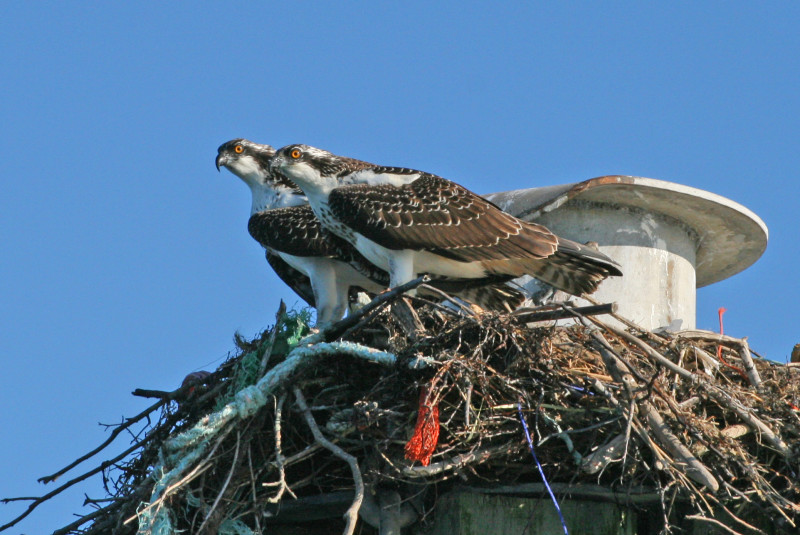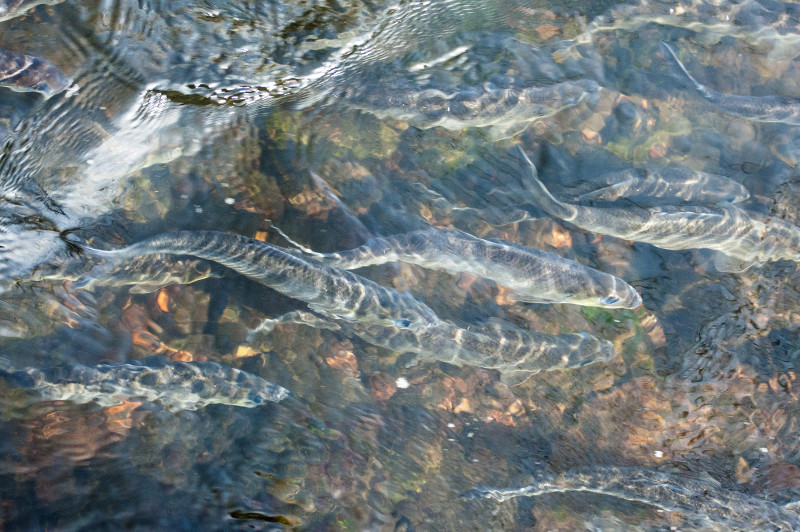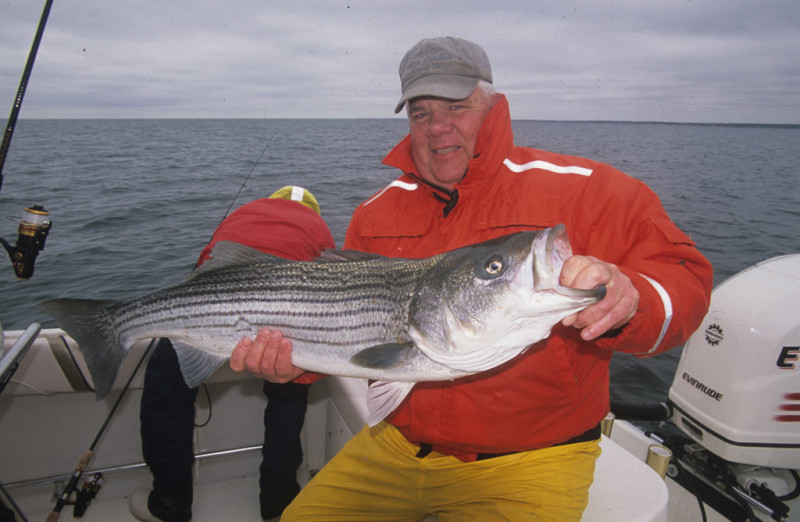6 signs of spring in the Buzzards Bay region
It’s time to put this winter in the record books! Spring has finally arrived – snow is melting and signs of the changing season will soon begin to spring up everywhere. From sprouting ferns to the arrival of new wildlife, look out for these six signs of spring and feel your winter woes melt away!
1. Ospreys return to Buzzards Bay

Ospreys return from their southern wintering grounds each spring. These big hawks are easily spotted along Buzzards Bay’s coast. (Image: Bill Fihlman)
Ospreys are one of Buzzards Bay’s most iconic wildlife species. After all, the Bay was likely named after an osprey that European explorers mistook for a buzzard.
The annual return of the osprey signals the true beginning of spring for many outdoor lovers in our region. Ospreys are easy to spot: These big, brown-and-white hawks are often seen soaring over rivers, salt marshes, shorelines, and the Bay’s open waters. Listen for their call – a high-pitched, chirping whistle – and look out for their large waterfront nests, where they raise their young through the summer.
Sadly, this wasn’t always so. In the 1950s and 1960s, osprey populations were decimated by the pesticide DDT. Through quick action, this remarkable bird came back from the brink and is now the world’s second most widely distributed raptor species.
Let this season’s ospreys remind you that when we work together, it’s possible to protect our water and wildlife. You can still make a difference for ospreys by helping Mass Audubon monitor local osprey populations at Allens Pond in Westport.
2. Spring peepers start calling in forests
The call of the spring peeper is one of the first and surest signs of spring. This tiny frog lives in forests, emerging in early spring to breed in vernal pools formed by spring rains.
To attract a mate, males emit a shrill, clear “peep” every few seconds – which is how these little frogs got their name. On a warm, wet evening in April, head to the woods and enjoy a chorus of tiny peeps reminding you that winter is through.
3. River herring start swimming up rivers

River herring migrate upstream in spring to spawn in our local rivers.
Each spring, our local rivers and streams turn into freeways for migrating alewife and blueback herring – two species of fish that are more commonly known as river herring. If you’re lucky, you can spot schools of river herring in places like the Acushnet River, Agawam River, and Wankinco River, where they swim upstream to spawn in fresh water.
For centuries, river herring were the life-giving sustenance for a host of species, including humans. But today, only a tiny fraction of historic populations still make their spring spawning journey upriver. Populations are so low that it’s now illegal to catch, sell, or possess river herring in Massachusetts.
Want to help us keep an eye on river herring? Volunteer as a Baywatcher this spring!
4. Seals and seabirds migrate north
With the changing seasons, it’s time to say farewell to Buzzards Bay’s winter wildlife. As the water gets warmer, harbor seals journey north to the Gulf of Maine for pupping season. Eiders, buffleheads, goldeneyes, and other sea ducks that bring color and sound to our silent winter shores will soon leave as well. Sea birds fly north to Canada, where they nest among wooded lakes and ponds.
5. Stripers run in Buzzards Bay

Striped bass can begin to run in Buzzards Bay as early as the second week of May. (Image: New England Boating)
For many people, fishing Buzzards Bay means one thing: hooking a monster bass. A lot of folks don’t believe in early-season magic, and we aren’t here to give away any tips or tricks. But according to New England Boating, early-season action in Buzzards Bay can be spectacular – even if it is short-lived.
By early May, striped bass are back in Buzzards Bay – and they’re hungry! So in April, get your battery back in your boat, make sure your trailer is up to spec, and pick up a Massachusetts recreational saltwater fishing permit so you’re ready to go when the stripers arrive.
6. Fern fiddleheads sprout
It’s a sure sign of spring when ferns begin to emerge from the ground in April. Ferns grow in shady, wooded areas, often near swamps and rivers. Look for the bright green young ferns, called fiddleheads, uncurl from the forest floor during your next walk through the woods.
Many species of ferns are found here in southeastern New England. But did you know there are some you can eat? Ostrich ferns, commonly known as fiddlehead ferns, grow wild in damp areas near rivers and streams. People harvest fiddlehead ferns early in the season before the frond (leaf) has opened. Though found in some supermarkets, fiddleheads are not cultivated, so if you buy them instead of gathering them yourself, make sure you purchase from a sustainable source.